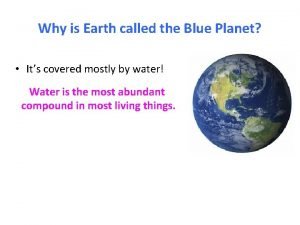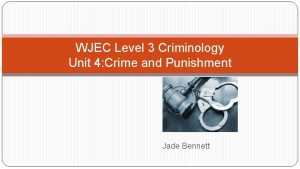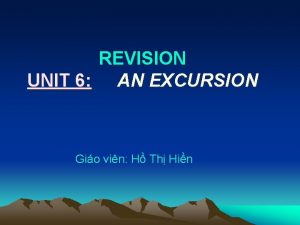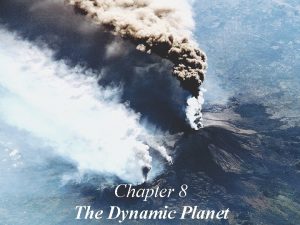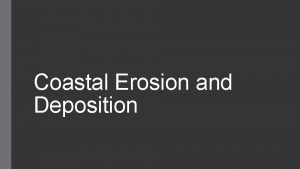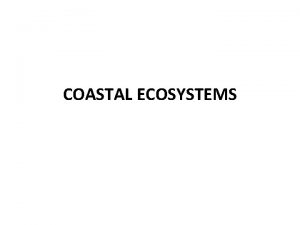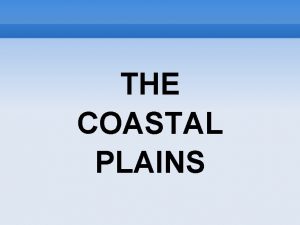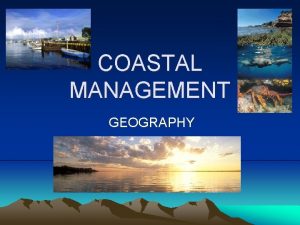Unit 1 Dynamic Planet Revision Topic 5 Coastal

















- Slides: 17

Unit 1 Dynamic Planet Revision Topic 5: Coastal Change

What you need to know • Impact of geology on the shape of coasts and types of landforms • Marine processes such as erosion, deposition and transport plus sub aerial processes, mass movement and rising sea levels • A case study of a rapidly eroding coast Holderness • Costs and benefits of hard and soft engineering • A holistic approach to management of coasts

Geological structure and coasts • What features can you identify on this photograph?

Practice Question (2 mins): Explain why the coast in the picture erodes rapidly (2 marks)

Possible answers (For 2 marks you need 2 correct statements) • The rocks in the area are very soft and so the sea will easily erode the bottom of the cliff and then the cliff will slump due to mass movement. • Rotational slumping caused by heavy rainfall and gravity causes the land to slip downwards and the coastline to retreat.

Comparing concordant and discordant coasts

Types of waves Typical question 2 marks How does a constructive wave differ from a destructive wave?

Typical answer - 2 points = 2 marks • Destructive waves have a shorter wave length than a constructive wave • Destructive waves have a bigger wave height than a constructive wave • In a destructive wave the swash is smaller than the backwash while in a constructive wave the swash is bigger than the backwash 9 8

Hurst Castle Spit N In what direction is the longshore drift? You have 2 minutes to draw a diagram to explain longshore drift

Managing coastal erosion

Holiday cabins at Barton on Sea are removed or moved further inland as the cliff erodes Beach material trapped behind the groynes Direction of Longshore Drift No coastal protection at Barton – and no beach as material is trapped by the groynes – therefore cliffs slump

Longshore Drift Groyne traps material on the up drift side leaving less beach down drift

Advantages and Disadvantages of Hard engineering type of defence Advantages Disadvantages Sea Wall Strong defence against the sea Expensive - so only worth building where land is valuable and costly to maintain Gabions Cheaper option good defence on loose rock faces ugly until vegetation starts to grow on them need replacing as the stones in the cages get eroded and metal corrodes Rip rap Good option as they take the energy out of the wave and can move. Very effective at cliff foot. Cheaper than a sea wall Traps sea weed and litter between the rocks which can smell. Unsightly and not good for swimmers at high tide. Groynes Traps the beach moved by longshore drift and protects the coast. Good for resorts which rely on beaches for tourists Cause more problems downdrift (terminal groyne syndrome as at Barton (Highcliffe has groynes and so no sediment gets to Barton)

Soft Engineering works with the sea to protect the coast. 1. Beach replenishment where beach is added to help protect the coast eg at Bournemouth 2. Cliff regrading - used in areas with soft rocks, the cliff face is made less steep and may be then covered in netting to help stabilise it and allow plants and vegetation to grow through. 3. Drainage pipes to drain the water out of the cliff to help prevent it slumping.

Drainage pipes take the water out of the sand so that it doesn’t become too heavy and slump Netting covers the lower part of the cliff which has been bulldozed to make it less steep. Plants grow through the netting and stabilise the cliff

• Typical Question relating to coastal management • Using examples describe how hard engineering along coasts can cause more problems than they solve (4 marks)

• Hard engineering is where the defences try to stop the sea. This is not always good for example sea walls are very costly and need constant repair. Groynes may trap material in one place but it means the beaches further down the coast are starved of new material and the beach can disappear as seen on the Holderness Coast meaning the coastline is badly eroded. Rip rap can trap litter and sea weed which is a problem if the beach is a tourist attraction.
 Why is the earth called the blue planet
Why is the earth called the blue planet Passive revision
Passive revision Paragraph writing strategy
Paragraph writing strategy Narrow
Narrow Earth's dynamic crust and interior topic 12
Earth's dynamic crust and interior topic 12 Dynamic dynamic - bloom
Dynamic dynamic - bloom What do you do to protect the environment
What do you do to protect the environment Sharing the planet unit of inquiry
Sharing the planet unit of inquiry External forms of social control
External forms of social control Unit 4 criminology
Unit 4 criminology Rmxjokhf_aa -site:youtube.com
Rmxjokhf_aa -site:youtube.com Revision unit 6
Revision unit 6 Ocr cambridge technicals level 3 sport unit 3 revision
Ocr cambridge technicals level 3 sport unit 3 revision Revision unit 6
Revision unit 6 Revision workout unit 4 lesson 8
Revision workout unit 4 lesson 8 Higher biology unit 3 revision
Higher biology unit 3 revision Ac1.3 criminology unit 1
Ac1.3 criminology unit 1 Elt oup student headway
Elt oup student headway
